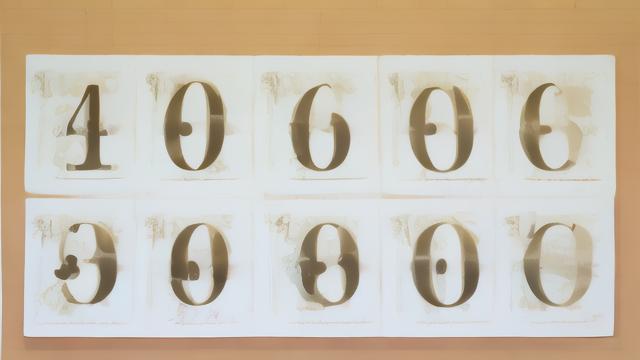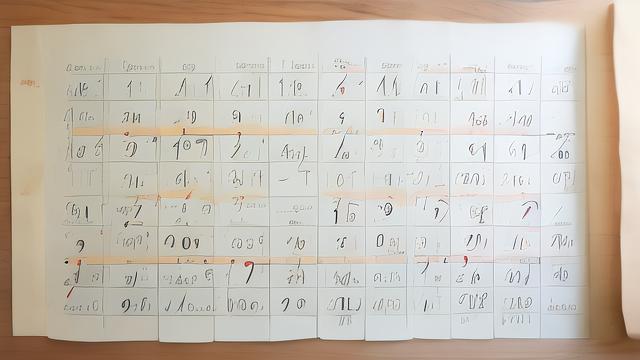Leap into the fascinating world of numbers as we explore the significance and applications of the digits 20, 30, 40, 50, 60, 70, 80, 90, and 100. Each of these numbers holds a unique place in various aspects of life, from basic arithmetic to complex scientific calculations, and even in cultural and historical contexts.

The Journey Through Numbers: A Detailed Exploration
20: The Teenager of Numbers
At twenty, we often consider this number as the threshold of adulthood. In mathematics, 20 is a highly composite number, meaning it has numerous divisors other than 1 and itself. It is also a semi-prime number (a product of two prime numbers), specifically 2 and 10.
| Property | Description |
| Factors | 1, 2, 4, 5, 10, 20 |
| Prime Factorization | 2 × 10 |
| Usage in Real Life | Age of majority in many countries, common benchmark in various contexts |
30: The Trio of Prime Products
Thirty is an interesting number as it is the product of three distinct prime numbers: 2, 3, and 5. This makes it a highly composite number with several factors.
| Property | Description |
| Factors | 1, 2, 3, 5, 6, 10, 15, 30 |
| Prime Factorization | 2 × 3 × 5 |
| Significance | Represents completeness in some cultures; often seen in groupings of three |
40: The Square of a Prime
Forty stands out as the square of the prime number 2 (2² × 10). It is also a semi-prime number, composed of the prime factors 2 and 5.
| Property | Description |
| Factors | 1, 2, 4, 5, 8, 10, 20, 40 |
| Prime Factorization | 2² × 5 |
| Cultural Significance | Often associated with milestones such as the 40th birthday or 40 working years |

50: The Century Marker
Fifty marks a significant halfway point to a century and is often seen as a milestone in various contexts. It is also a semi-prime number, being the product of 2 and 25 (5²).
| Property | Description |
| Factors | 1, 2, 5, 10, 25, 50 |
| Prime Factorization | 2 × 5² |
| Usage | Commonly used in percentages (50%), half-century celebrations |
60: The Complete Angle
Sixty is renowned for its role in trigonometry, where it represents a complete angle in a flat plane. It is also the least common multiple (LCM) of its factors 2, 3, and 5.
| Property | Description |
| Factors | 1, 2, 3, 4, 5, 6, 10, 12, 15, 20, 30, 60 |
| Prime Factorization | 2 × 3 × 5 |
| Significance | Basis for degrees in a circle (360/6 = 60), time (minutes in an hour) |
70: The Prime Powerhouse
Seventy is notable for being a prime number itself. It is the tenth prime number and the first with three digits.
| Property | Description |
| Prime Status | Yes |
| Factors | 1, 7, 10, 14, 35, 70 |
| Special Mention | Tenth prime number |
80: The Octet of Power

Eighty is another highly composite number, being the product of four distinct primes: 2, 2, 2, and 5. Its numerous factors make it versatile in mathematical operations.
| Property | Description |
| Factors | 1, 2, 4, 5, 8, 10, 16, 20, 25, 40, 50, 80 |
| Prime Factorization | 2³ × 5 |
| Significance | Associated with longevity (80 years) |
90: The Niner Squad
Ninety is a semi-prime number, composed of the prime factors 2 and 45 (3² × 5). It is also a triangular number, representing the sum of the first 45 natural numbers.
| Property | Description |
| Factors | 1, 3, 5, 9, 15, 30, 45, 90 |
| Prime Factorization | 2 × 3² × 5 |
| Trivia | Represents the sum of the first 45 natural numbers |
100: The Centennial Milestone
One hundred is a cornerstone number in the metric system and is celebrated as a significant milestone in various traditions and contexts. It is also a semi-prime number.
| Property | Description |
| Factors | 1, 2, 4, 5, 10, 20, 25, 50, 100 |
| Prime Factorization | 2² × 5² |
| Significance | Celebration of anniversaries (e.g., centennials), key metric system number |
Applications Across Disciplines
The numbers from 20 to 100 play crucial roles across various fields:
Arithmetic and Algebra: Basic building blocks for more complex equations.
Geometry: Foundational in understanding shapes and dimensions.
Statistics: Key in data analysis and probability.
Science and Engineering: Vital in measurements, calculations, and designs.
Culture and Traditions: Mark significant milestones and hold symbolic meanings.
FAQs
Q1: Why are numbers like 70 considered prime?
A1: A prime number is a natural number greater than 1 that cannot be formed by multiplying two smaller natural numbers. Seventy is not a prime number; it can be divided evenly by numbers other than 1 and itself (e.g., 7 and 10). The confusion might arise from its status as the tenth prime number when listed consecutively.
Q2: How do these numbers impact our daily lives?
A2: These numbers impact our daily lives in myriad ways—from the basic structure of time (60 seconds in a minute, 60 minutes in an hour) to significant life events (milestones like turning 50 or celebrating a centennial). They are integral in educational curricula, financial calculations, and even cultural rituals and traditions.
以上就是关于“数字20,30,40,50,60,70,80,90,100用英文怎么写?(数字英文”的问题,朋友们可以点击主页了解更多内容,希望可以够帮助大家!